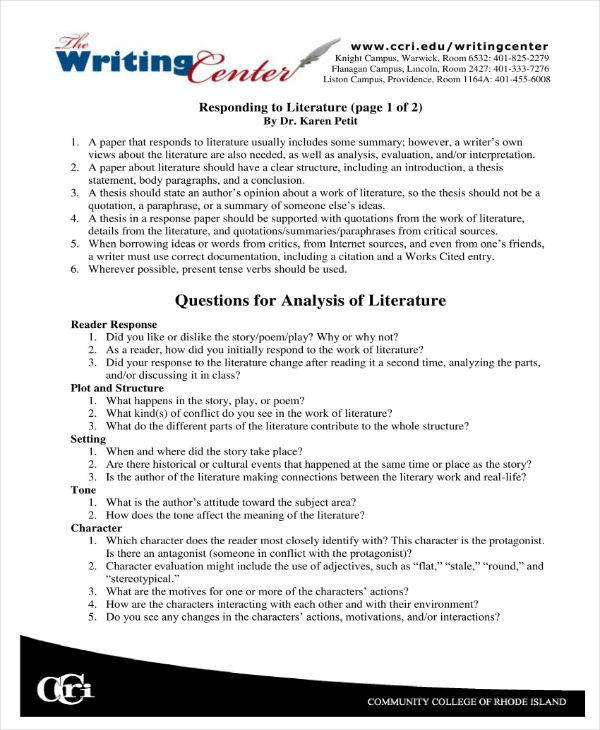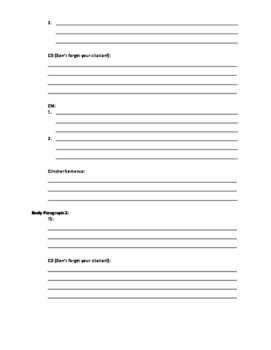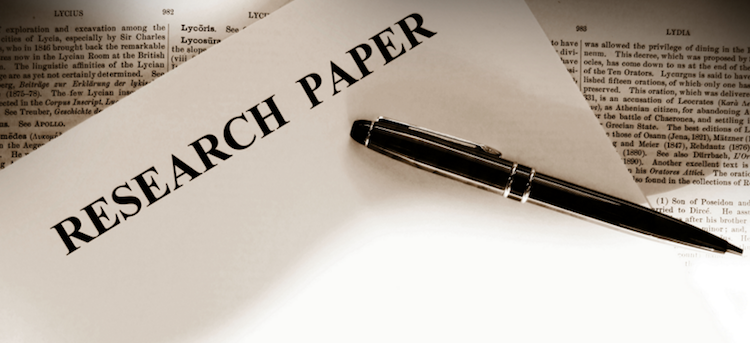
Basic Tips for Writing a Literary Analysis 1. Write in the present tense. EXAMPLE: In Faulkner's "A Rose for Emily," the townspeople visit Emily Grierson's house because it smells bad. NOT: In Faulkner's "A Rose for Emily," the townspeople visited Emily Grierson's house because it smelled bad. 2. Normally, keep yourself out of your analysis; in other words, use the third person (no I or you A Guide to Writing the Literary Analysis Essay. I. INTRODUCTION: the first paragraph in your essay. It begins creatively in order to catch your reader’s interest, provides essential background about the literary work, and prepares the reader for your major thesis. The introduction must include the author andFile Size: 42KB quality of literature you have chosen, and the power of your writing. You are expected to write a clear, interesting, and convincing essay. Voice and tone should be evident. Syntax should be varied and sophisticated. Figures of speech should Literary Analysis Essay: Outline I. Attention Getter:_____ File Size: 55KB
FREE 32+ Sample Essay Outlines in PDF | DOC | Examples
Published on January 30, literary analysis essay outline pdf, by Jack Caulfield. Revised on February 5, Literary analysis means closely studying a text, interpreting its meanings, and exploring why the author made certain choices. It can be applied to novels, short stories, plays, poems, or any other form of literary writing.
A literary analysis essay is not a rhetorical analysisnor is it just a summary of the plot or a book review. Instead, it is a type of argumentative essay where you need to analyze elements such as the language, perspective, and structure of the text, and explain how the author uses literary devices to create effects and convey ideas.
As you write, follow the standard structure of an academic essay :. Table of contents Reading the text and identifying literary devices Coming up with a thesis Writing a title and introduction Writing the body of the essay Writing a conclusion. The first step is to carefully read the text s and take initial notes. As you read, pay attention to the things that are most intriguing, surprising, or even confusing in the literary analysis essay outline pdf are things you can dig into in your analysis.
Your goal in literary analysis is not simply to explain the events described in the text, but to analyze the writing itself and discuss how the text works on a deeper level. To get started with your analysis, there are several key areas that you can focus on. As you analyze each aspect of the text, try to think about how they literary analysis essay outline pdf relate to each other, literary analysis essay outline pdf.
You can use highlights or notes to keep track of important passages and quotes. Consider what style of language the author uses. Are the sentences short and simple or more complex and poetic? What word choices stand out as interesting or unusual? Are words used figuratively to mean something other than their literal definition? Figurative language includes things like metaphor e. Also keep an eye out for imagery in the text—recurring images that create a certain atmosphere or symbolize something important.
Remember that language is used in literary texts to say more than it means on the surface. Is the narrator omniscient where they know everything about all the characters and eventsor do they only have partial knowledge?
Are they an unreliable narrator who we are not supposed to take at face value? Authors often hint that their narrator might be giving us a distorted or dishonest version of events. The tone of the text is also worth considering. Is the story intended to be comic, tragic, or something else? Are usually serious topics treated as funny, or vice versa? Is the story realistic or fantastical or somewhere in between? There are also less formal structural elements to take into account. Does the story unfold in chronological order, or does it jump back and forth in time?
Does it begin in medias res —in the middle of the action? Does the plot advance towards a clearly defined climax? With poetry, consider how the rhyme and meter shape your understanding of the text and your impression of the tone. Try reading the poem aloud to get a sense of this. In a play, you might consider how relationships between characters are built up through different scenes, and how the setting relates to the action.
Your thesis in a literary analysis literary analysis essay outline pdf is the point you want to make about the text. For example:. Consider what stood out to you in the text; ask yourself questions about the elements that interested you, and literary analysis essay outline pdf how you might answer them. Your thesis should be something arguable—that is, something that you think is true about the text, but which is not a simple matter of fact. It must be complex enough to develop through evidence and arguments across the course of your essay.
However, this statement is too simple to be an interesting thesis. After reading the text and analyzing its narrative voice and structure, you can develop the answer into a more nuanced and arguable thesis statement:. Mary Shelley uses shifting narrative perspectives to portray Frankenstein in an increasingly negative light as the novel goes on.
The literary analysis essay outline pdf is to keep you focused as you analyze the text. To support your thesis statement, your essay will build an argument using textual evidence —specific parts of the text that demonstrate your point. This evidence is quoted and analyzed throughout your essay to explain your argument to the reader, literary analysis essay outline pdf.
It can be useful to comb through the text in search of relevant quotations before you start writing. Scribbr Plagiarism Checker.
Your title should clearly indicate what your analysis will focus on. Keep it as concise and engaging as possible. A common approach to the title is to use a relevant quote from the text, followed by a colon and then the rest of your title. The essay introduction provides a quick overview of where your argument is going.
A typical structure for an introduction is to begin with a general statement about the text and author, using this to lead into your thesis statement.
You might refer to a commonly held idea about the text and show how your thesis will contradict it, or zoom in on a particular device you intend to focus on. This is called signposting. In this reading, protagonist Victor Frankenstein is a literary analysis essay outline pdf representation of the callous ambition of modern science throughout the novel.
This essay, however, argues that far from providing a stable image of the character, Shelley uses shifting narrative perspectives to portray Frankenstein in an increasingly negative light as the novel goes on. If you do write the introduction first, you should still return to it later to make sure it lines up with what you ended up writing, and edit as necessary. The body of your essay is everything between the introduction and conclusion.
It contains your arguments and the textual evidence that supports them. A typical structure for a high school literary analysis essay consists of five paragraphs : the three paragraphs of the body, plus the introduction and conclusion. Each paragraph in the main body should focus on one topic. In the five-paragraph model, try to divide your argument into three main areas of analysis, literary analysis essay outline pdf, all linked to your thesis. In longer essays, literary analysis essay outline pdf, the same principle applies on a broader scale.
For example, you might have two or three sections in your main body, each with multiple paragraphs. Within these sections, you still want to begin new paragraphs at logical moments—a turn in the argument or the introduction of a new idea.
A good topic sentence allows a reader to see at a glance what the paragraph is about, literary analysis essay outline pdf. It can introduce a new line of argument and connect or contrast it with the previous paragraph. A key part of literary analysis is backing up your arguments with relevant evidence from the text. This involves introducing quotes from the text and explaining their significance to your point. Here, you summarize your key points and try to emphasize their significance to the reader.
Far from the one-dimensional villain he is often taken to be, the character of Frankenstein is compelling because of the dynamic narrative frame in which he is placed.
Have a language expert improve your writing. Check your paper for plagiarism in 10 minutes. Do the check. Generate your APA citations for free! APA Citation Generator. Home Knowledge Base Essay A step-by-step guide to literary analysis. A step-by-step guide to literary analysis Published on January 30, by Jack Caulfield.
As you write, follow the standard structure of an academic essay : An introduction that tells the reader what your essay will focus on. A main body, divided into paragraphsliterary analysis essay outline pdf, that builds an argument using evidence from the text.
A conclusion that clearly states the main point that you have shown with your analysis. What is your plagiarism literary analysis essay outline pdf Compare your paper with over 60 billion web pages and 30 million publications.
Is this article helpful? Jack Caulfield Jack is a Brit based in Amsterdam, with an MA in comparative literature. He writes and edits for Scribbr, and reads a literary analysis essay outline pdf of books in his spare time. Other students also liked, literary analysis essay outline pdf. How to write a thesis statement A thesis statement is a sentence that sums up the central point of your essay.
It usually comes at the end of the introduction. How to write a paragraph Each paragraph in your paper should focus on one central point. Follow these 6 steps for a strong paragraph structure. How to write a narrative essay A narrative essay tells a story, literary analysis essay outline pdf. It is a personal and creative type of essay that tests your ability to create a clear and engaging narrative.
Papers \u0026 Essays: Crash Course Study Skills #9
, time: 9:00How To Write A Literary Analysis Essay Outline With Examples

After reading through multiple short stories in class, and exploring the manner in which we analyze and construct a literary analysis response, it is time to take things to the next level. You will be writing a literary analysis essay using the steps below. This essay will allow you to demonstrate what you have learned regarding reading comprehension, literary analysis, written form Basic Tips for Writing a Literary Analysis 1. Write in the present tense. EXAMPLE: In Faulkner's "A Rose for Emily," the townspeople visit Emily Grierson's house because it smells bad. NOT: In Faulkner's "A Rose for Emily," the townspeople visited Emily Grierson's house because it smelled bad. 2. Normally, keep yourself out of your analysis; in other words, use the third person (no I or you Outline Structure for Literary Analysis Essay I. Catchy Title II. Paragraph 1: Introduction (Use HATMAT) A. Hook B. Author C. Title D. Main characters E. A short summary F. Thesis III. Paragraph 2: First Body Paragraph A. Topic sentence (what this paragraph will discuss, how it will prove your thesis) B. Context for the quote 1. Who says it? 2

No comments:
Post a Comment